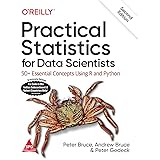Causal Conclusions and Control of Confounding Variables in Research
Causal Conclusions and Control of Confounding Variables, establishing a causal relationship between variables is crucial for drawing accurate conclusions.
Randomization plays a vital role in achieving this goal by controlling confounding variables that can distort the relationship between independent and dependent variables.
This article discusses the importance of causal conclusions, randomization, random sampling, and the distinction between independent and paired samples, as well as control and placebo groups in research studies.
Causal conclusions allow researchers to attribute changes in one variable to changes in another, enabling them to establish a direct cause-and-effect relationship.
Without randomization, which is different from random sampling, researchers can only identify associations between variables, not causation.
Why Python is an Important and Useful Programming Language » finnstats
Randomization is the process of assigning experimental units to different conditions to control for confounding variables and establish causality.
Random sampling, on the other hand, is a probability-based method used to select a representative sample from a population for a study.
It ensures that the findings can be generalized to the broader population. In contrast, randomization is employed to control confounding variables within an experimental study.
To illustrate the significance of randomization, consider a study comparing coffee consumption and heart disease risk.
If a researcher simply observes the habits and health status of coffee drinkers and non-drinkers, confounding variables such as age, smoking, diet, and exercise habits may skew the results.
However, by randomly assigning participants to either a coffee-consuming or non-coffee-consuming group and controlling for these variables, a causal conclusion can be drawn.
Another example involves comparing the effectiveness of two fitness programs in promoting weight loss.
An observational study that surveys people already enrolled in the programs can only identify an association between the programs and weight loss, as confounding variables may exist.
In contrast, a randomized experiment where participants are randomly assigned to one of the programs and their weight loss is measured can lead to a causal conclusion.
In research studies, independent and paired samples are two types of statistical comparisons used to analyze data. Independent samples involve cases in each group that are unrelated to one another, such as comparing the effectiveness of two different drugs.
Paired samples, also known as dependent or matched pairs, involve cases in each group that are meaningfully matched, like comparing the effectiveness of a new therapy to an old therapy in the same group of patients.
Control and placebo groups are essential components of many research studies, particularly in clinical trials. The control group serves as a comparison for the intervention being studied, receiving either no treatment or a placebo.
The purpose of the control group is to evaluate the effects of the intervention. A placebo group, a type of control group, receives a treatment that appears identical to the intervention but contains no active ingredients.
This helps control for the placebo effect, which is the improvement in symptoms due to a participant’s belief in the treatment.
Conclusion
Randomization is a crucial tool for controlling confounding variables and enabling researchers to draw causal conclusions from their studies.
Understanding the distinctions between independent and paired samples, as well as control and placebo groups, is essential for designing robust research studies that provide reliable and accurate findings.
By employing these techniques, researchers can minimize the impact of confounding variables and advance our understanding of cause-and-effect relationships in various fields of study.
OLS Regression in R » Data Science Tutorials






